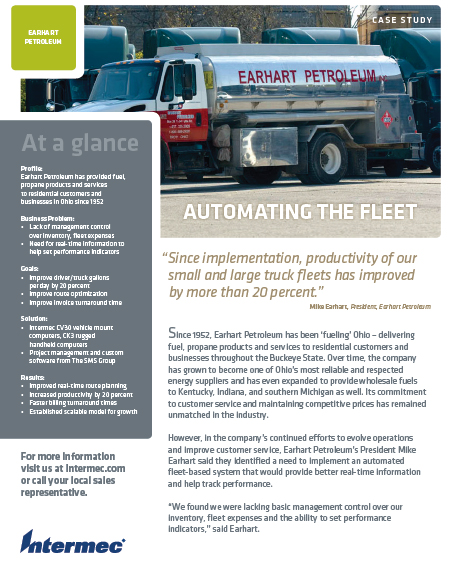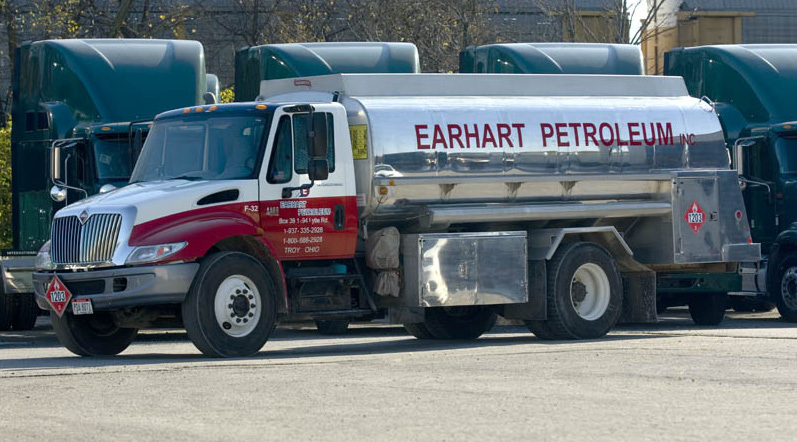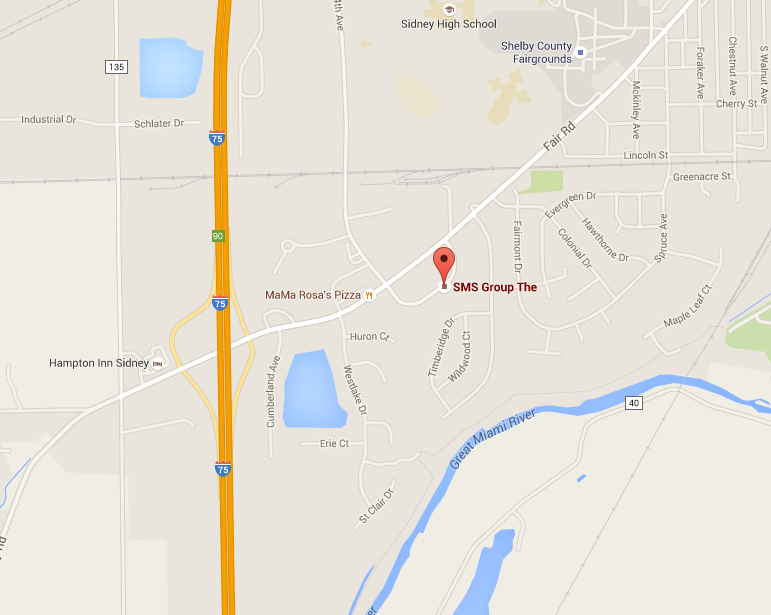Since 1952, Earhart Petroleum has been ‘fueling’ Ohio – delivering fuel, propane products and services to residential customers and businesses throughout the Buckeye State. Over time, the company has grown to become one of Ohio’s most reliable and respected energy suppliers and has even expanded to provide wholesale fuels to Kentucky, Indiana, and southern Michigan as well. Its commitment to customer service and maintaining competitive prices has remained unmatched in the industry.
However, in the company’s continued efforts to evolve operations and improve customer service, Earhart Petroleum’s President Mike Earhart said they identified a need to implement an automated fleet-based system that would provide better real-time information and help track performance.
“We found we were lacking basic management control over our inventory, fleet expenses and the ability to set performance indicators,” said Earhart.
“We saw a real need to invest in an advanced technology solution that would offer better visibility into our overall fleet operations.” The answer? A customized software solution created by The SMS Group, an expert integrator of data collection systems, coupled with Intermec CV30 vehicle mount computers and CK3 rugged handheld computers.
The Need for Automation
Earhart Petroleum had several goals they hoped to achieve as a result of the technology investment. They looked to improve delivery efficiency (as measured by gallons delivered per truck/per day) by 20 percent, minimize inventory shrinkage, reduce staff overtime and improve invoice turnaround time by three business days.
Under the old system, orders were printed at the company’s regional offices, where drivers would meet each morning to arrange their routes for the day – this system lacked basic route optimization and instead required drivers to create their own routes.
Additionally, same-day orders caused major issues – they were all manually communicated from the office to the drivers via phone, often resulting in key details being lost in the translation. This caused an increase in drivers making simple errors, such as missing a delivery window. Additionally, same-day orders were communicated without the office knowing what product was available on each truck, causing drivers to make smaller delivery quantities with what they had available to sustain the company’s service standards, but at an increased cost.
Finally, all completed order tickets were mailed or couriered back to the main office for invoicing, adding two to three days for an invoice to be generated for the customer.
The absence of real-time feedback regarding what products were on each truck also prevented quick analysis of inventory variances. By the end of each month, it was difficult to identify the cause of an inventory variance, which caused inventory shrinkage to be a significant expense issue.
A Customized Solution
“For an overall solution, our needs exceeded anything a pre-packaged solution could provide,” said Earhart. “We worked with The SMS Group to bridge the gap from packaged software to something tailored to our needs.”
The SMS Group created a customized software solution that offered Earhart Petroleum the ability to utilize the trucks as Wi-Fi hot spots. Additionally, the software is enabled to transmit data via WWLAN, Wi-Fi, or batch store data if a network is unavailable. For the hardware, Earhart Petroleum tested several options, but ultimately chose the Intermec CV30s due to their ultra-rugged form factor, something required to withstand the harsh “in-cab” environment.
Under the new system, the Intermec CV30s are placed in the delivery and service vehicles, providing a platform to run multiple in-cab applications including Earhart Petroleum’s custom order fulfillment application, a DOT hours of service application, and a time and attendance payroll application. These units continually receive route-optimized open orders from logistics personnel and send back multiple levels of data including completed delivery information, log of payroll hours, location of the vehicle, arrivals and departures from delivery location, driver safety metrics, and engine performance data.
Additionally, the on-board systems transmit information in real-time to a logistics group made up of dispatchers and analysts at the company’s main office, allowing dispatchers to make better tactical decisions on a daily basis. At the same time, data received back from the fleet is now aggregated and refined so analysts can make better strategic decisions, such as identifying where to locate delivery and service trucks for peak seasons, identifying optimal inventory storage/reloading locations, and even targeting which customers require tank monitoring to ensure service expectations are met and they don’t run out of fuel.
“To meet our customers’ expectations, we’ve set high delivery and service standards for our company, said Earhart. “This is documented, framed, and hanging throughout our office as a daily reminder. Under our new system, we’ve equipped our logistics group well with tools that give them the best chance of success to consistently meet these standards.”
Description

Download the PDF




